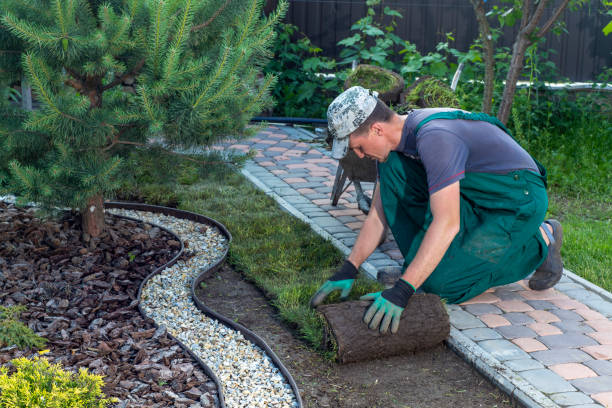Small-Scale Composting Methods for Richer Soil
Discover practical small-scale composting approaches that suit balconies, patios, and compact gardens. This short guide highlights easy DIY options, simple maintenance tips, and how compost supports sustainability and soil health without large space or heavy equipment.

Composting on a small scale can transform kitchen scraps and yard trimmings into a steady supply of nutrient-rich material that improves soil structure, water retention, and plant vigor. Whether you are managing a balcony container, a patio planter, or a modest backyard bed, adopting appropriate composting methods reduces waste, supports local pollinators and perennials, and integrates with broader landscaping or hardscaping plans. A few low-effort practices make composting compatible with nearby interiors and outdoor living areas such as decking and patios.
How does small-scale composting support sustainability and soil health?
Small-scale composting closes a local nutrient loop by converting organic waste into mulch and fertilizer. This reduces the need for synthetic inputs and lowers household waste volumes. Finished compost enhances soil biology, promoting beneficial microbes and better root growth for perennials and pollinator-friendly plants. Using compost also improves water efficiency when combined with thoughtful irrigation planning, since amended soil holds moisture longer and encourages deeper root systems that are more resilient to dry spells.
What DIY methods work for a patio or decking setup?
For patios, decks, and balcony gardens, container composting or tumblers are practical options. A simple DIY bin can be made from upcycled wooden pallets or plastic crates with drainage and airflow holes. Bokashi fermentation works indoors for food scraps and can be combined with outdoor compost for full breakdown. Regular turning or tumbling speeds decomposition, and keeping a balanced mix of greens (kitchen scraps) and browns (dry leaves or shredded cardboard) prevents odors near interiors and living spaces.
How can upcycling and landscaping integrate compost into the yard?
Upcycling household materials into compost systems ties composting into landscaping and hardscaping projects. Repurpose old bins, barrels, or broken furniture as compost containers to match your patio aesthetic or decking area. Use finished compost in planting pockets within hardscaping, sprinkle as a topdressing around perennials, or mix into soil when installing planters. Thoughtful placement of compost bays behind screens or integrated into raised beds keeps them unobtrusive while supporting overall garden design.
How to apply compost as mulch and fertilizer for perennials and pollinators?
Compost makes an effective mulch that suppresses weeds, regulates soil temperature, and slowly releases nutrients. Apply a thin layer around perennials and pollinator-attracting plants to protect roots and enrich soil life. For a fertilizer boost, work compost lightly into the top few inches of soil before planting or during dormant seasons. Avoid piling compost against stems; instead, leave a small gap to reduce pest and moisture issues. Regular applications over seasons build long-term fertility without harsh chemicals.
How does composting affect irrigation and soil structure?
Incorporating compost into soil improves porosity and water-holding capacity, which can reduce irrigation frequency and support healthier root systems. Compost increases organic matter, helping sandy soils retain moisture and clay soils drain better through improved aggregation. When planning irrigation, consider the enhanced soak and reduced runoff in amended beds; drip irrigation or soaker hoses pair well with compost-amended planting zones to deliver water efficiently without disturbing mulch layers.
How to manage compost near interiors, lighting, and outdoor living spaces?
Keep compost systems tidy and low-odor by balancing materials, maintaining good airflow, and covering active piles. Locate bins away from doors and under indirect outdoor lighting to minimize nighttime visibility while ensuring ease of access. For indoor-adjacent setups, Bokashi or small vermicomposters are effective with minimal smell; worms and contained systems can sit on a balcony or utility area. Regular monitoring and occasional turning help prevent pests and keep compost production steady.
In summary, small-scale composting offers flexible methods that fit a variety of outdoor and indoor-adjacent spaces. By choosing appropriate systems—DIY bins, tumblers, Bokashi, or vermicomposting—you can integrate compost into landscaping, support pollinators and perennials, and improve soil structure for better irrigation outcomes. Thoughtful placement and routine maintenance make composting a practical part of sustainable home gardening without requiring significant space or complex equipment.





